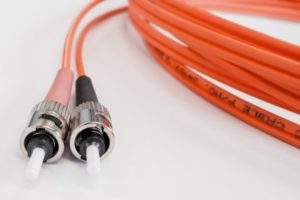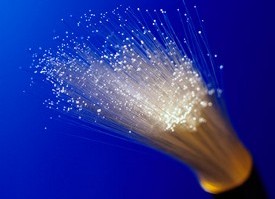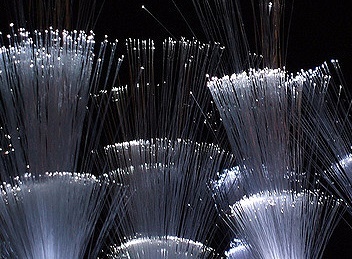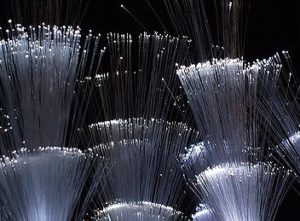
Why Cable Pros Select Fiber Optic Over Copper Cabling
 During your consideration of the kind of cable that should be selected for your IT network, several factors come into play. One of the decisions you will need to make is whether to use copper or fiber optic cabling.
During your consideration of the kind of cable that should be selected for your IT network, several factors come into play. One of the decisions you will need to make is whether to use copper or fiber optic cabling.
Copper certainly has plusses. It is already installed in numerous sites and is less costly for connecting network components. Although fiber optic cabling has a higher price tag, it has key advantages that make it more attractive than copper for creating structured cabling infrastructure.
The following are five reasons why most cable professionals select fiber optic over copper cabling.
Durability
Fiber optic cables have longer service lives than copper, decreasing maintenance costs and downtimes from replacements. Although fiber optic wires are made of glass, copper wires are more susceptible to being damaged.
Fiber Optic is Faster
When evaluating the transmission of copper wire to that of fiber optic, the contest can be simplified to the comparison of the speed of electrons to the speed of photons. Although C transmissions do not move at the speed of light, they are still extremely fast by moving just 31% slower than the speed of light!
Low Attenuation
Over long distances, fiber optic cables will undergo much less signal loss than copper. This quality is termed “low attenuation.” Due to attenuation, copper cables are capable of transmitting information up to a maximum of 9,328 ft, when it then loses power. In contrast, fiber optic cables are capable of transmissions up to 24.8 miles.
Resistance to EMI (Electromagnetic Interference)
If improperly installed, copper cables will generate electromagnetic currents that result in EMI inside nearby wires, which can cause serious problems throughout a network. On the other hand, fiber optic cables are not conductors of electricity.
Safer
Fiber optic cabling is safer because it won’t be a fire hazard. The reason is no electrical current travels through fiber optic cables.
Progressive Office Cabling
Founded in 1986, Progressive Office’s success has been a direct result of years of commitment to seeking solutions on behalf of our clients in the Washington, D.C. and New York City areas. Efficiently working together, Progressive teams get cabling installed and operating as fast as possible while minimizing disruption and downtime. Call our toll free number (800) 614-4560 today.



 The widespread use of fiber optic
The widespread use of fiber optic 
 communications, because light propagates through the fiber with little attenuation compared to electrical cables. This allows long distances to be spanned with few or no repeaters. Additionally, the per-channel light signals propagating in the fiber can be easily modulated at 1 Gb/s.
communications, because light propagates through the fiber with little attenuation compared to electrical cables. This allows long distances to be spanned with few or no repeaters. Additionally, the per-channel light signals propagating in the fiber can be easily modulated at 1 Gb/s. rt distances, up to 550 m (600 yards), and single-mode fiber used for longer distance links. Because of the tighter tolerances required to couple light into and between single-mode fibers (core diameter about 10 micrometers), single-mode transmitters, receivers, amplifiers and other components are generally more expensive than multi-mode components.
rt distances, up to 550 m (600 yards), and single-mode fiber used for longer distance links. Because of the tighter tolerances required to couple light into and between single-mode fibers (core diameter about 10 micrometers), single-mode transmitters, receivers, amplifiers and other components are generally more expensive than multi-mode components.